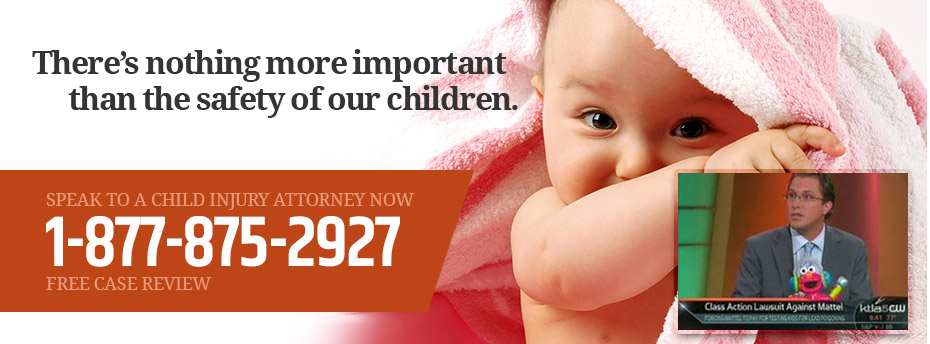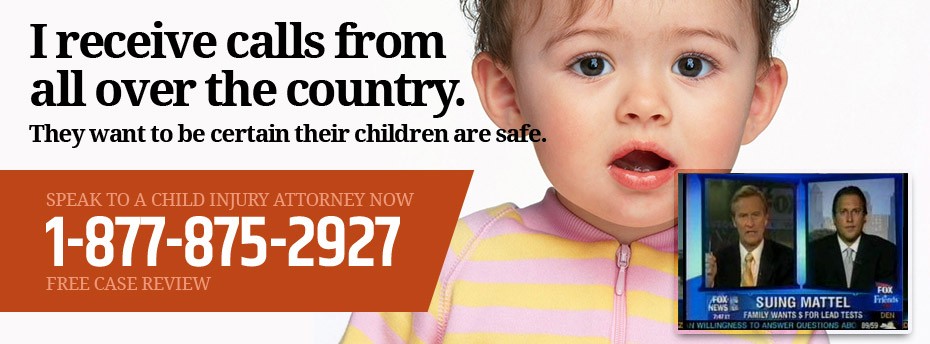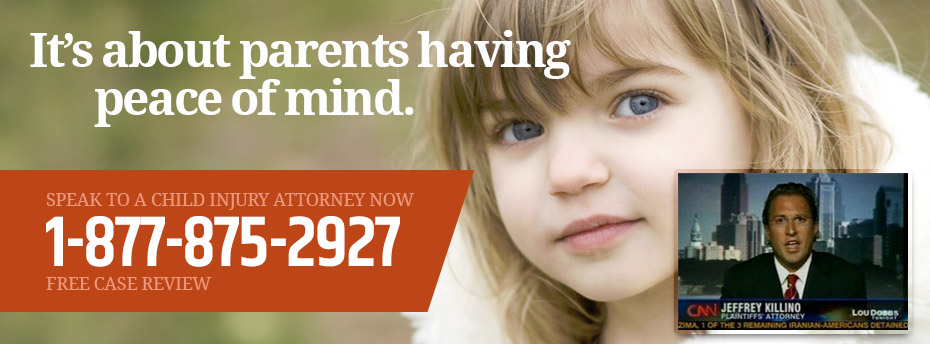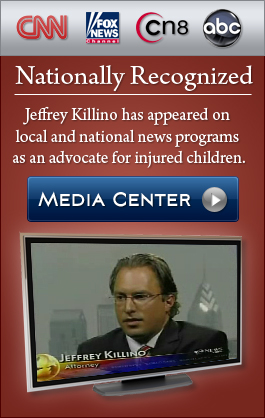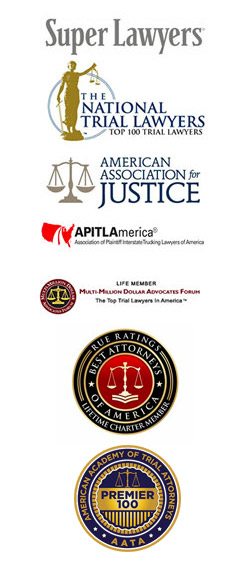Booster dining seats and other baby feeding seats for use at home and in restaurants are supposed to make mealtimes more enjoyable for both parents and their children.
Unfortunately, an attachable feeding booster seat or baby countertop seat may not be the best option for your little one, especially if it’s defectively designed or manufactured or lacks adequate instructions for proper installation and use.
Our Child Injury Lawyers have extensive experience representing victims of preventable accidents and defective products, earning national recognition for their aggressive pursuit of justice on behalf of injured children and their families. If your son or daughter was hurt while using any type of baby feeding seat, please call our law firm toll-free at 877-875-2927 to speak with an attorney and learn more about your legal rights.
What to Know About Baby Feeding Seats
A booster seat is basically a smaller, more portable version of a highchair used to position an older baby or toddler at the correct height for eating at a table. Some booster chairs can also be placed on top of a counter.
Most of these products secure to a regular dining chair using one or two straps, but others attach directly to the table or are placed on a countertop. They usually have seatbacks to support the child, and some have removable trays for placing food and toys.
Booster dining seats are standard in restaurants frequented by families. However, many parents also purchase a booster seat or baby countertop set for use at home or while traveling.
Generally, booster seats are not recommended for kids under 9 months of age, as they’re only suitable for children who can sit up unsupported and can eat independently. Younger babies are better off in a highchair once they begin eating solid foods.
Booster Seat Injuries and Deaths
Between January 1, 2008, and October 31, 2017, the U.S. Consumer Products Safety Commission (CPSC) received 912 reports of booster seat accidents, including two that resulted in a child’s death. Falling from a booster seat was the most commonly reported incident. Other hazards included restraint/attachment problems, seat-related issues, including lock/latch failures, and tray and design defects.
According to one recent study, more than 9,400 kids receive treatment every year for an injury associated with a highchair or booster seat. That’s equal to about one child per hour nationally.
About 93% percent of those injuries occurred as a result of a fall. In the cases that reported what the child was doing just before the fall, two-thirds were hurt while climbing or standing in the chair, suggesting that the product’s safety restraint system was either defective or not being used.
The most commonly reported highchair and booster seat injuries included:
- Closed head injuries, including concussions and internal head injuries. (37%)
- Bumps/bruises (33%)
- Cuts (19%)
The number of closed head injuries actually increased by almost 90% during the study period, jumping from 2,558 in 2003 to 4,789 in 2010. The body regions most commonly injured were the head/neck (59%) and the face (28%).
In June 2018, the CPSC approved mandatory safety standards for child booster seats, including those used at home and in restaurants. The standards require that:
- The retail package of the booster seat indicates the minimum dimensions of the adult chair on which the booster seat will fit.
- All booster seats have an active means of attaching to an adult chair to prevent the seat and children from falling off the adult chair.
- Warnings on the booster seat remind consumers to make sure the seat is securely fastened to the adult chair before each use.
- To prevent falls, consumers are also warned to stop children from pushing away from the table while in the booster seat.
Booster Seat Recalls
The CPSC has also announced multiple recalls for dining booster seats in recent years, including products that harmed babies and toddlers.
OXO Nest Booster Seat Recall

In May 2015, for example, OXO recalled around 25,000 Nest Booster Seats because the stitching on the restraint straps could loosen, allowing the straps to separate from the seat and posing a fall hazard to children. By the time the products were recalled, OXO had received five reports of the stitching coming undone and releasing the straps. No injuries were reported.
The recall involved the Nest Booster Seat sold in green (model 6367200), pink (model 6367300), taupe (model 6367500), and orange (model 6367400) with a white base. A sticker affixed to the underside of the seat read “Nest Booster Seat” with the model number and manufacture date. The manufacture date code represented the month and year in MMYY format. All recalled units had the code: 0714, 0814, 0914, 1014, 1114, or 1214.
The formed plastic seats were about 13 inches wide by 14 inches tall by 12 inches deep and had a grey three-point child restraint strap system. The OXO logo was embossed on the restraint system’s buckle. They were sold at buybuy Baby, Toys”R”Us/Babies”R”Us, and independent specialty stores nationwide and online at Amazon.com from September 2014 through April 2015 for about $55.
Consumers were advised to immediately stop using the Nest Booster and contact OXO for a free repair kit with redesigned safety straps and installation instructions.
Target Circo Booster Seat Recall

In August 2009, Target recalled about 43,000 Circo Booster Seats because the restraint buckle could open unexpectedly, allowing a child to fall from the chair and suffer an injury. At the time, Target received eight reports of the booster seat buckles opening, including three reports of bruises.
The initial recall involved Circo Booster Seat with manufacture date codes XJ0811, XJ0812, XJ0901, and XJ0902. The plastic booster seat was blue with green trim and had white straps. The manufacture date code was printed on the backside of the seat next to the consumer warning information. “Circo” was also printed on a label located in the front of the chair.
The Circo Booster Seat recall was subsequently expanded in June 2011, after Target received 10 additional reports of booster seat buckles opening unexpectedly, including three reports of bumps and/or bruises when a child fell forward out of the booster seat, hitting an object or the floor.
The expanded recall involved all Circo Booster Seats, including those sold as early as 2005.
Consumers were directed to stop using the recalled booster seats and return them to any Target store for a full refund.
Safety 1st Fold-Up Booster Seat Recall

In October 2001, Safety 1st recalled around 1.5 million Fold-Up Booster Seats because the top half of the seat inserts could separate and cause a child to fall. The CPSC and Safety 1st received 32 reports where the seat halves separated, including seven reports of injuries from falls, including bumps, cuts, bruises, and a fractured arm.
Only Safety 1st Fold-Up Booster Seats with model numbers 173, 173A, and 173B were included in this recall. The model number is located on the back of the booster seat, inside the left arm panel. The booster seat is made of blue plastic with green and red arms and includes a yellow feeding tray. The seat insert for the booster seat consists of two halves that are “press-fitted” together. They have a smooth surface bottom, with no indentations. The booster seats have a restraint system made up of a two-piece waist strap and one crotch strap. “SAFETY 1ST” is molded on the top and bottom of the seat insert.
These booster seats were sold at major toy, hardware, and department stores nationwide from January 1994 through August 1999 for about $18. Consumers were advised to stop using these seats immediately and contact Safety 1st to receive a free repair kit with instructions.
Booster Seat Safety Tips
A dining booster seat can make feeding an older baby or toddler much more manageable. But to prevent serious accidents and injuries, it’s essential to take the following precautions:
- Always use the safety straps. Be sure to buckle your child into the seat every time and check the straps frequently to ensure they’re secure and in good working order.
- Only use booster seats with either a 3-point or 5-point harness that includes a crotch strap or post. Remember – a removable tray is not enough to keep kids in the seat.
- Ensure that the dining chair you’re attaching the booster seatto is stable and sturdy (not lightweight) and has a backrest. Never attach a booster seat to a folding chair or bar stool. Test the seat to ensure that it’s locked securely onto the table or chair before putting your child in it.
- Make sure tablecloths, placemats, sharp silverware, plates, and hot food and liquids are out of reach of your son or daughter.
- Be aware of where you put the booster seat. If it is too close to the table, a counter, or the wall, your child could knock the chair over by kicking their feet into these objects.
- Never allow your baby to stand or climb on their booster seat, as the chair could tip over.
- Remain with your child during mealtime. Unsupervised kids are more likely to try to escape from their booster seats and are also more likely to choke on their food.
- Periodically check recalls.govto see if your dining booster seat has been recalled.
Contact a Leading Child Injury Lawyer Today
A booster seat that’s been poorly designed or defectively manufactured can still cause severe injuries and wrongful death, even when parents and caregivers have taken all possible precautions to ensure a baby or toddler is safe.
As a top child injury attorney, Jeffrey Killino has the resources and knowledge to help injured victims and their families receive the compensation they deserve. If your son or daughter was hurt while using a dining booster seat, please do not hesitate to contact us at 1-877-875- 2927.
